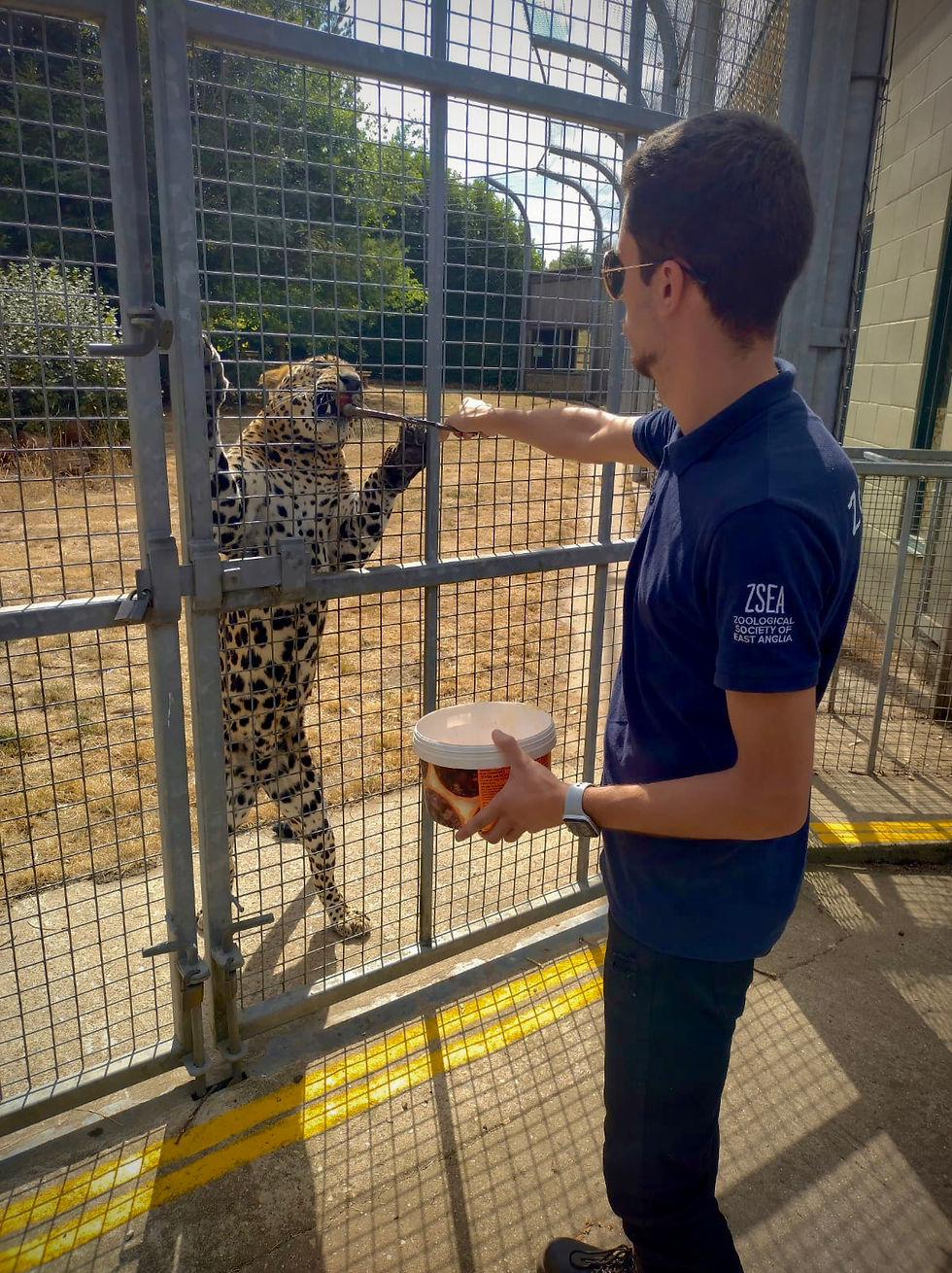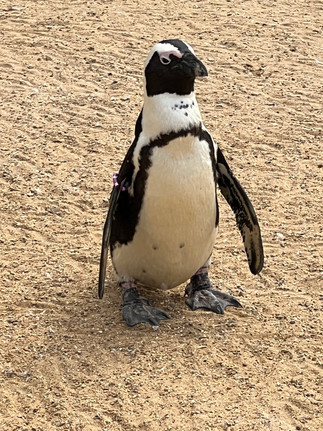The Meerkat, The Sloth and The Engineer - Why Conservation?
- Bailey Tuddenham

- Feb 14, 2023
- 4 min read
Updated: Apr 17, 2023
For someone studying product design and engineering, the conservation of endangered species probably seems like a strange topic to pick.

However, over the last summer (2022), I worked for the Zoological Society of East Anglia at Banham Zoo, Norfolk. I applied for the job with no prior knowledge of the animals or of conservation in general. I was given a huge range of responsibilities, including educating the public on the animals and conservation, feeding animals, carrying out animal experiences and much more! The summer at Banham Zoo sparked an interest in a topic that I'd never thought much of before, and forced me to learn a lot in a short period of time. Carrying out a research project on this topic will give me the chance to dive deeper into this area and explore how technology is having an impact on conservation.
I applied for a summer job at Banham Zoo which I'd seen posted on Indeed. I went for my interview, not expecting to be offered the role, as I had no prior experience working with animals, or in zoo or conservation industries. However, I was fortunate enough to be offered the role!
I arrived on my first day, not knowing exactly what I'd be doing or what I'd gotten myself into. I was amazed by the responsibilities that I ended up being given; by the end of just the first two days, I'd fed cheetahs and Amur tigers, as well as learnt background information on the meerkats and the animals within the tropical house of the zoo. I'm going to dive into some detail of some of the things that I did whilst at the zoo, and how they relate to this project.
Experiences
One of the roles that I had at the zoo was running animal experiences for guests. The two experiences that I carried out were "Meet the Meerkats" and "Meet the Lorikeets". These experiences allowed the public to get up and close with the animals, whilst learning information about them. This meant that I had to learn a huge amount of information about meerkats and lorikeets, including details on their physical features, food, habitat, adaptations, endangerment, mating patterns and much more!
There were three meerkats that I worked with, with differing personalities. One of which (Smartie) was a lot more nervous than the other two, and I made it my mission to try and build his confidence by the end of my time at the zoo. The meerkat experience allowed the public to sit down in the enclosure, and have the meerkats climb on them and eat, whilst I discussed information on them and answered any questions people had. However, when I first started working with Smartie, he would keep at a relatively large distance from the public, whereas Mars and Twix were straight onto people's laps. Each day, I worked on building Smartie's confidence by placing mealworms onto the top of my shoe. To begin with, he didn't take to it, but by the end of my period at Banham, Smartie was leaping onto my boot before I'd even had a chance to stop walking within the enclosure. Making those sorts of bonds with animals, and seeing how something so small can make such a big impact, has made me think of conservation in a completely different way. Imagine being able to have that sort of impact, but on a massive scale. That's what conservation is all about.

EDUCATION
Another part of my job at the zoo was educating children and parents on conservation, artefacts and particular animals within the zoo. One of the educational roles that I had was managing 'conservation stations'. Conservation stations were tables set up in different areas of the zoo with a range of artefacts, which changed each day. I would then talk to the public about the different artefacts, and explain to them why the animal may have adapted in that way, what has caused them to become endangered (usually humans...) and what we can do to help! It was great to see children get so engaged in talking about conservation and protecting endangered animals. Encouraging the next generation to take a more positive approach to looking after nature was extremely rewarding.
In addition to the conservation stations, I also helped with a few kids clubs over the course of the summer. This was, once again, a really rewarding experience. The kids were always really interested in learning about the animals in the zoo and what they could do to help them.

SLOTH BABYSITTING...
You may think that educating public or carrying out animal experiences is difficult. But, nothing compares to the difficulty of babysitting sloths.
Meet my arch-nemesis, Arlo.

So, you think sloth's are slow?
No.
I would turn around for 5 seconds and Arlo would be long gone. Where would he go? Literally anywhere that I didn't want him to be. Arlo certainly kept me on my toes, and keeping an eye on him was simultaneously great fun and extremely strenuous.
But, who am I kidding? My experience would not have been the same without him...
Amur Tigers
During my time at the zoo, I worked with a huge range of animals, including giraffes, meerkats, parrots and cheetahs. But, the animals at Banham Zoo that I became most attached to were the Amur tigers.
There are four Amur tigers at Banham Zoo; Mishka, Kuzma, Luca and Kira. They're a family, made up of Mum and Dad and their two cubs. The tigers were extraordinary animals, and ones that I grew really fond of. Their individual personalities were amazing, and they were extremely interesting to study and observe. I spent a lot of time working at the Amur tiger enclosure, and taught people as much as I could about them.














































